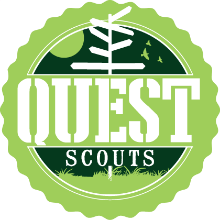Often abundant in urban areas, micros allow for hides where larger containers would not normally fit. Some are "evil," others are an easy find that point out unique locations. Go find one!
Objective:
Locate a micro sized geocache or letterbox.
Details:
1) Locate a micro sized geocache or letterbox.*
The geocaching community calls them "Micros" while letterboxers call them "Microboxes," but in both cases these hides are described as the size of a film can or smaller. While less room for trade items or larger stamps, micros can still bring you to awesome locations and are often hidden in fun, innovative ways.
Note: This objective should not be overlapped with another objective "find" objective.
2) Tell us about your experience making the find in the comments below! If applicable, include the geocache/letterbox number.
3) Document your find with a photo and post it on Instagram or Twitter with the tag #QuestScouts. Alternatively, you can also share your experience in our Facebook group.
*Not familiar with location based games? Watch this video by Groundspeak about geocaching or read about letterboxing from Atlas Quest.








